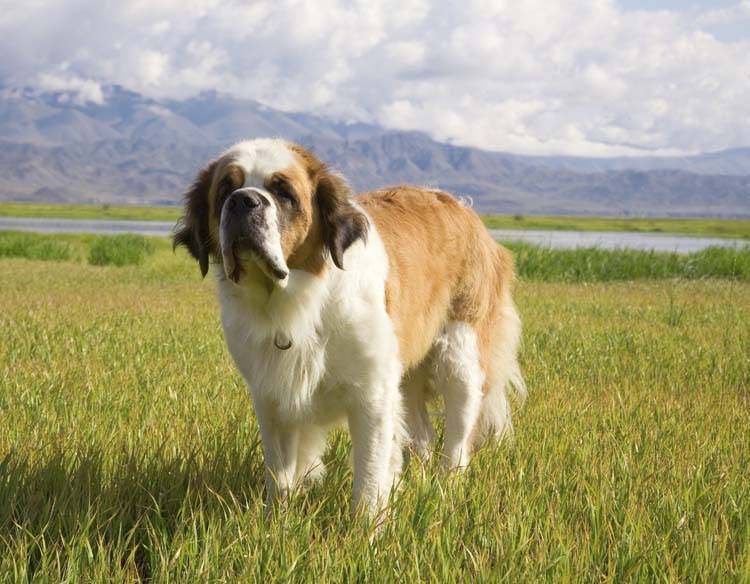St. Bernard Facts
By Cara Lederman
History
Recognized by the AKC in 1885 and placed in the Working Group, the St. Bernard’s history began in the 11th century with the founding of the famous Hospice in the Swiss Alps, a refuge for travelers crossing the dangerous passes between Switzerland and Italy.
The monks used St. Bernards on rescue missions due to their seeming ability to sense impending avalanches. Over time, the dogs gradually learned rescue techniques from the monks, and to this day they still have the instinct to seek out and rescue people buried in snow.
Thanks to their superior sense of smell and huge paws, they can detect and dig out a person buried under 20 feet of snow. Over the course of 300 years of rescue work, St. Bernards have saved the lives of more than 2,000 people. For these reasons, this dog breed is famous for its heroism.
Myth Buster: St. Bernards never carried brandy barrels around their necks while rescuing avalanche victims in the Swiss Alps. Instead, they wore jackets that held food and water.
Appearance
Descended from the Mastiff family, St. Bernards can weigh anywhere between 100 and 200 pounds, and are extremely strong and muscular. Due to their jaw’s shape, there is loose skin on the facial area, which means they drool—a lot.
The original St. Bernard was short-haired, but was later crossbred with the Newfoundland to produce the long-haired version in an effort to give the breed a warmer coat. A longer coat was necessary due to the number of St. Bernards who lost their lives while rescuing victims of avalanches during severely cold winters.
Whether short- or long-haired, they have a dense double coat, meaning regular grooming is required. They are susceptible to heart and joint problems, which means regular exercise and a healthy diet are important.
Fun Fact: Because of how quickly St. Bernard puppies grow, more than 100 different puppies were used to film the movie “Beethoven’s 2nd.”
Lifestyle & Temperament
Often referred to as gentle giants, St. Bernards are wonderful family pets and are great around children. They are extremely compassionate, tolerant and affectionate. Proper socialization and strong, but fair leadership should be implemented right away. When trained correctly, you will have a very friendly St. Bernard where your only concern may be getting knocked over accidentally due to his large size.
RELATED: How to Choose a Dog for Children
St. Bernards prefer a cold environment. If you live in a warmer environment, make sure to provide plenty of shade and a small wading pool or misters whenever your St. Bernard is outside. Training St. Bernards can be fairly easy, as this breed is eager to please. However, a professional dog trainer would advise you begin training a St. Bernard at a young age, as he can run out of energy quickly.
Overall, the St. Bernard is a wonderful dog–a heroic rescuer on snowy mountains and an affectionate and tolerant family pet. Contact your local dog trainer for help with training and socializing your St. Bernard at an early age.
Sources:
www.akc.org
animal.discovery.com/tv-shows/dogs-101
www.saintbernardclub.org
READ MORE: Nova Scotia Duck Tolling Retriever Grooming







